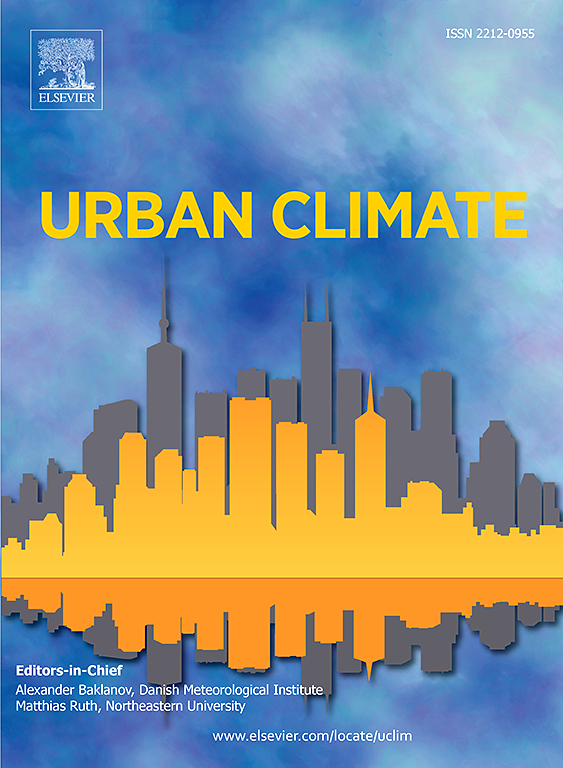水文连通性为城市湿地综合体创造了额外的冷却效果
IF 6
2区 工程技术
Q1 ENVIRONMENTAL SCIENCES
引用次数: 0
摘要
在城市化进程中,利用湿地缓解城市热岛效应日益受到重视。在影响湿地降温效果的诸多因素中,水文连通性起着重要作用,但其对城市湿地降温效果的影响机制尚不清楚。本文采用ENVI-met模型对成都湿地的热环境和降温效应进行了模拟,探讨了水文连通性导致湿地降温效应的原因。结果表明:在夏季白天,水文连通湿地的降温能力显著优于单个大湿地或等面积的离散湿地,尤其是在气温高峰时段(15:00-17:00);平行风向和垂直风向下,水文连通湿地的额外降温效应分别达到0.79°C和0.14°C。水文连通性造成的额外降温效应部分是由于连通性创造的通风走廊(贡献率24%)和湿地连接相对较低的温度效应(贡献率17%)。在城市空间有限的情况下,连接多个分散的湿地是一种低成本、基于自然的解决方案(Nbs),可以缓解热岛效应。本文章由计算机程序翻译,如有差异,请以英文原文为准。
Hydrological connectivity creates additional cooling effects for urban wetland complexes
With respect to urbanization, the use of wetlands to mitigate the urban heat island effect has received increasing attention. Among the many factors affecting the cooling effect of wetlands, hydrological connectivity plays an important role, but how it influences the cooling effect of urban wetlands still remains unclear. In this study, the ENVI-met model was used to simulate the thermal environments and cooling effects of wetlands in Chengdu, Southwest China, and to explore the causes of the cooling effects induced by hydrological connectivity. The results showed that, in the summer daytime, the cooling capacity of hydrologically connected wetlands was significantly better than that of a single large wetland or discrete wetland of equal area, especially during the peak air temperature (15:00–17:00); the additional cooling effect induced by hydrologically connected wetlands reached 0.79 °C under the parallel wind direction and 0.14 °C under the perpendicular wind direction. The additional cooling effect induced by hydrological connectivity was partly due to the ventilation corridor created by connectivity (contribution rate 24 %) and the relatively low temperature effect of the wetland connection (contribution rate 17 %). In the case of limited space in an urban setting, connecting multiple discrete wetlands is a low-cost, nature-based solution (Nbs) for alleviating the heat island effect.
求助全文
通过发布文献求助,成功后即可免费获取论文全文。
去求助
来源期刊

Urban Climate
Social Sciences-Urban Studies
CiteScore
9.70
自引率
9.40%
发文量
286
期刊介绍:
Urban Climate serves the scientific and decision making communities with the publication of research on theory, science and applications relevant to understanding urban climatic conditions and change in relation to their geography and to demographic, socioeconomic, institutional, technological and environmental dynamics and global change. Targeted towards both disciplinary and interdisciplinary audiences, this journal publishes original research papers, comprehensive review articles, book reviews, and short communications on topics including, but not limited to, the following:
Urban meteorology and climate[...]
Urban environmental pollution[...]
Adaptation to global change[...]
Urban economic and social issues[...]
Research Approaches[...]
 求助内容:
求助内容: 应助结果提醒方式:
应助结果提醒方式:


